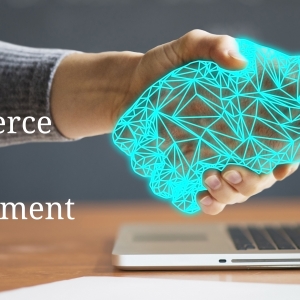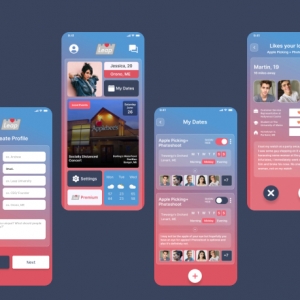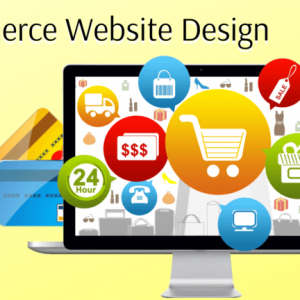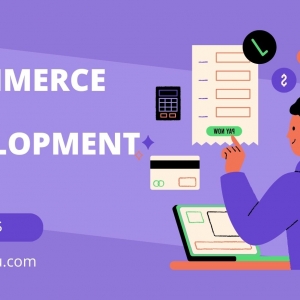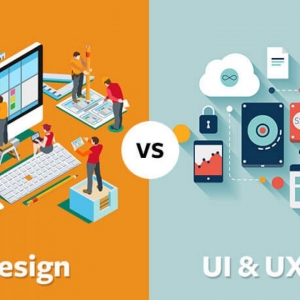In the dynamic landscape of online commerce, staying ahead of the curve is essential for long-term success. E-commerce design, in particular, is a field where trends evolve rapidly, driven by changing consumer behaviors, technological advancements, and industry innovations. To future-proof your e-commerce design, it's crucial to understand and incorporate emerging trends while embracing innovative solutions that enhance user experiences and drive business growth.
Embracing Minimalism and Simplicity
One prevailing trend in e-commerce design is the emphasis on minimalism and simplicity. Clean layouts, ample white space, and straightforward navigation contribute to a more intuitive and visually appealing user experience. Streamlining the design not only enhances the aesthetic appeal but also improves website performance and load times, crucial factors for retaining impatient online shoppers.
Mobile-First Approach
The ubiquity of smartphones has reshaped the way consumers interact with online platforms. Designing with a mobile-first approach ensures that your e-commerce site is not only responsive but prioritizes the mobile user experience. With the increasing reliance on mobile devices for shopping, a seamless and user-friendly mobile design is paramount for capturing and retaining customers.
Personalization and AI Integration
E-commerce is shifting towards a more personalized shopping experience, driven by the integration of artificial intelligence (AI) and machine learning algorithms. By analyzing user behavior, preferences, and purchase history, AI can tailor product recommendations, personalize content, and optimize the overall user journey. Implementing AI-driven personalization not only enhances customer satisfaction but also increases conversion rates and customer loyalty.
Augmented Reality (AR) for Enhanced Product Visualization
As technology advances, augmented reality has become a game-changer in e-commerce design. AR enables customers to virtually try products before purchasing, providing a more immersive and interactive shopping experience. Integrating AR into your e-commerce design allows customers to visualize how products will fit into their lives, reducing the likelihood of returns and enhancing overall customer satisfaction.
Sustainable and Eco-Friendly Design
As environmental consciousness grows, consumers are increasingly drawn to brands that prioritize sustainability. E-commerce design trends now include eco-friendly elements, from green color schemes to messaging emphasizing sustainable practices. Incorporating sustainable design not only aligns your brand with contemporary values but also appeals to a conscious consumer base.
Voice Commerce and Conversational Interfaces
Voice-activated technology has gained significant traction in recent years, and this trend extends to e-commerce design. Integrating voice commerce capabilities allows users to interact with your platform using voice commands. Additionally, incorporating conversational interfaces, such as chatbots powered by natural language processing, enhances customer support and provides instant assistance, improving the overall shopping experience.
Social Commerce Integration
Social media platforms continue to play a crucial role in driving online engagement. E-commerce design trends include seamless integration with social media, allowing users to discover and purchase products directly through social channels. Leveraging the power of social commerce enhances brand visibility, fosters community engagement, and creates new avenues for customer acquisition.
Blockchain for Enhanced Security
Security is a top concern for online shoppers, and e-commerce design must address these fears. Blockchain technology, known for its decentralized and secure nature, is increasingly being integrated into e-commerce platforms to ensure transparent and tamper-proof transactions. Implementing blockchain not only enhances the security of online transactions but also builds trust with consumers.
Continuous A/B Testing and Data-Driven Iterations
Future-proofing your e-commerce design requires a commitment to continuous improvement. A/B testing, where two versions of a webpage are compared to determine which performs better, allows for data-driven decision-making. Regularly analyzing user behavior and feedback provides valuable insights, enabling you to iterate and optimize the design based on real-world user interactions.
Conclusion
Future-proofing your e-commerce design involves a strategic blend of staying attuned to emerging trends and embracing innovative technologies. From prioritizing mobile experiences to integrating AI-driven personalization, the key is to create a dynamic and responsive design that adapts to the evolving needs of your target audience. By incorporating these trends and innovations, you position your e-commerce platform for sustained success in the ever-evolving digital marketplace.

